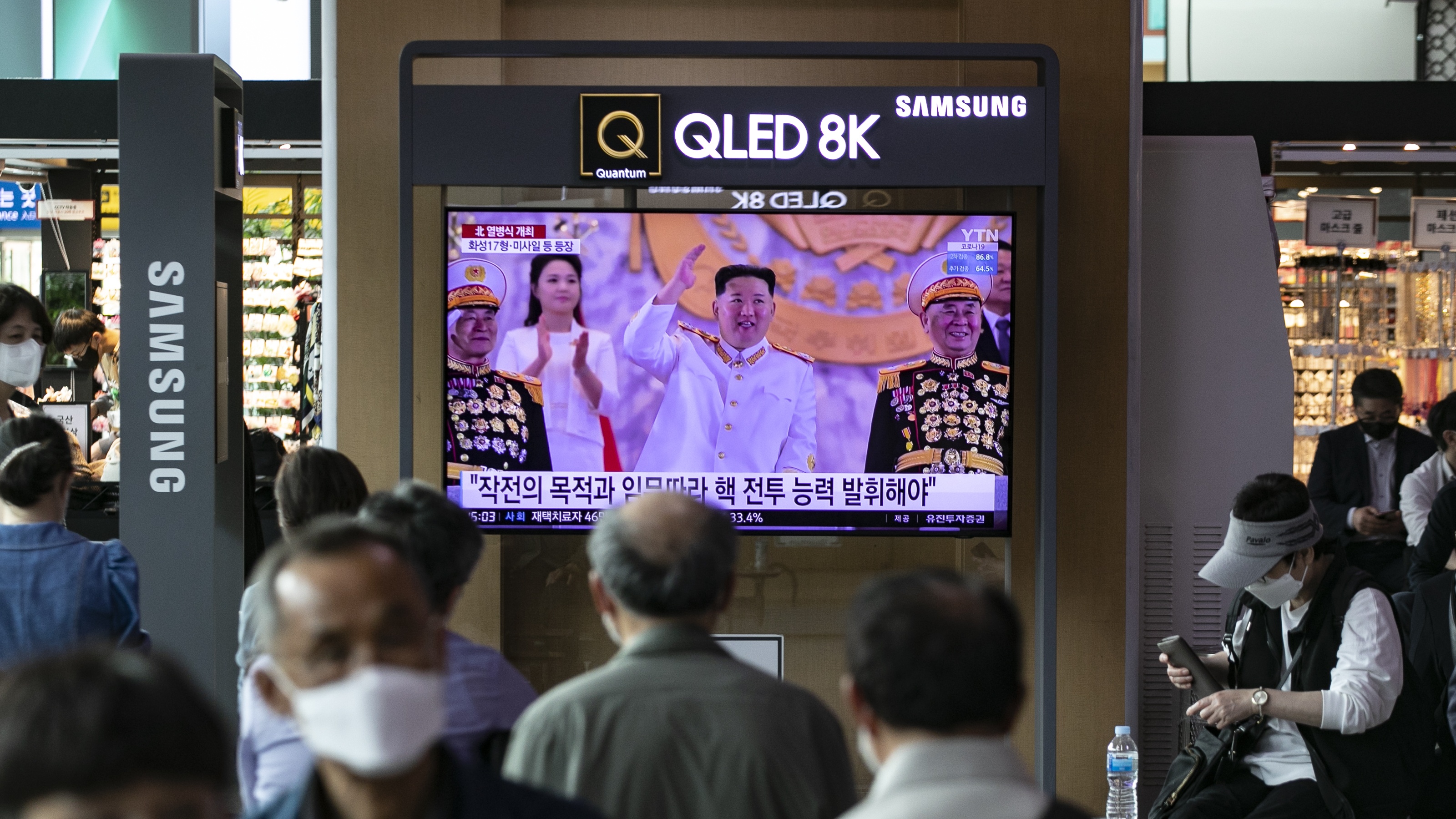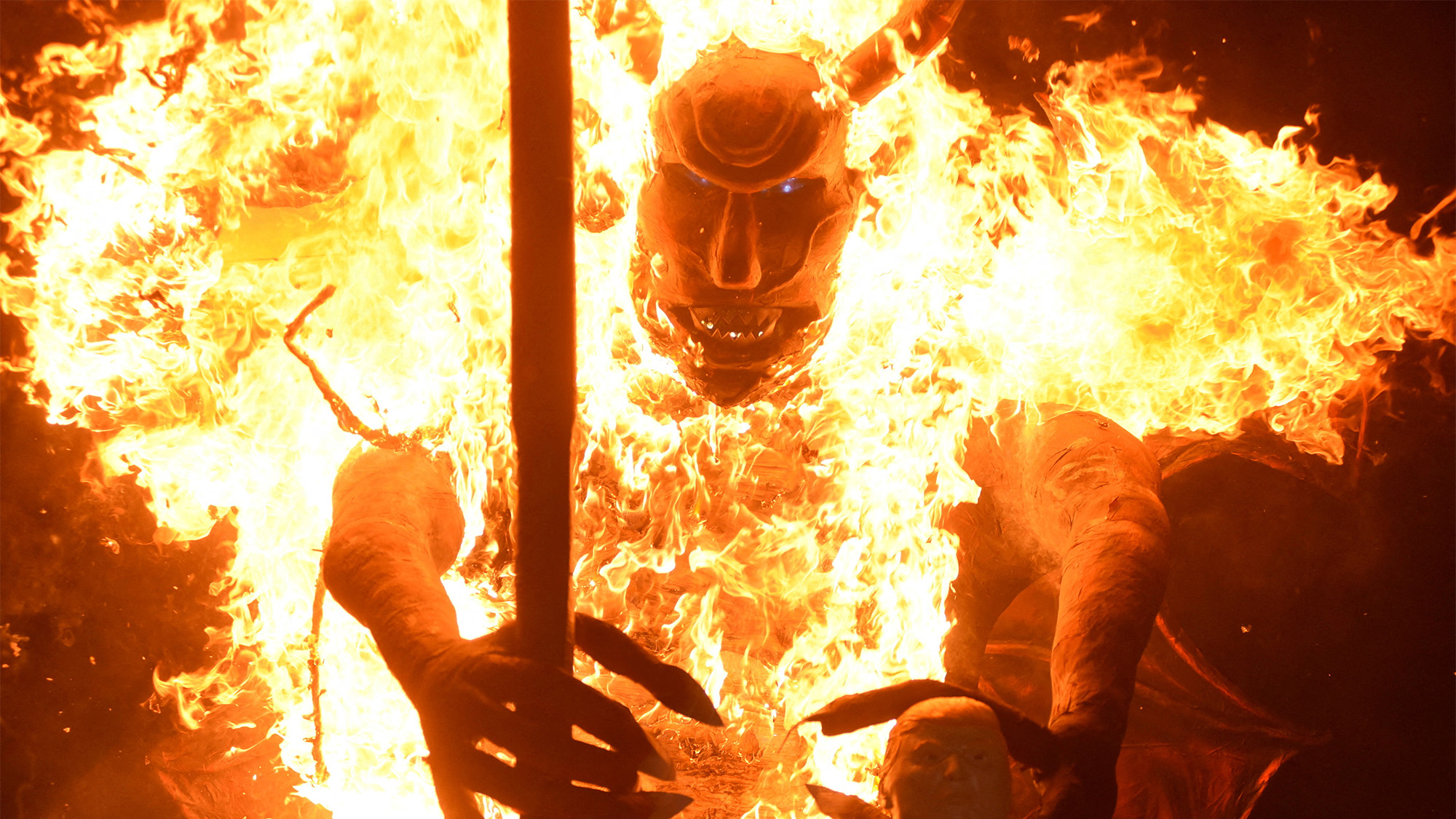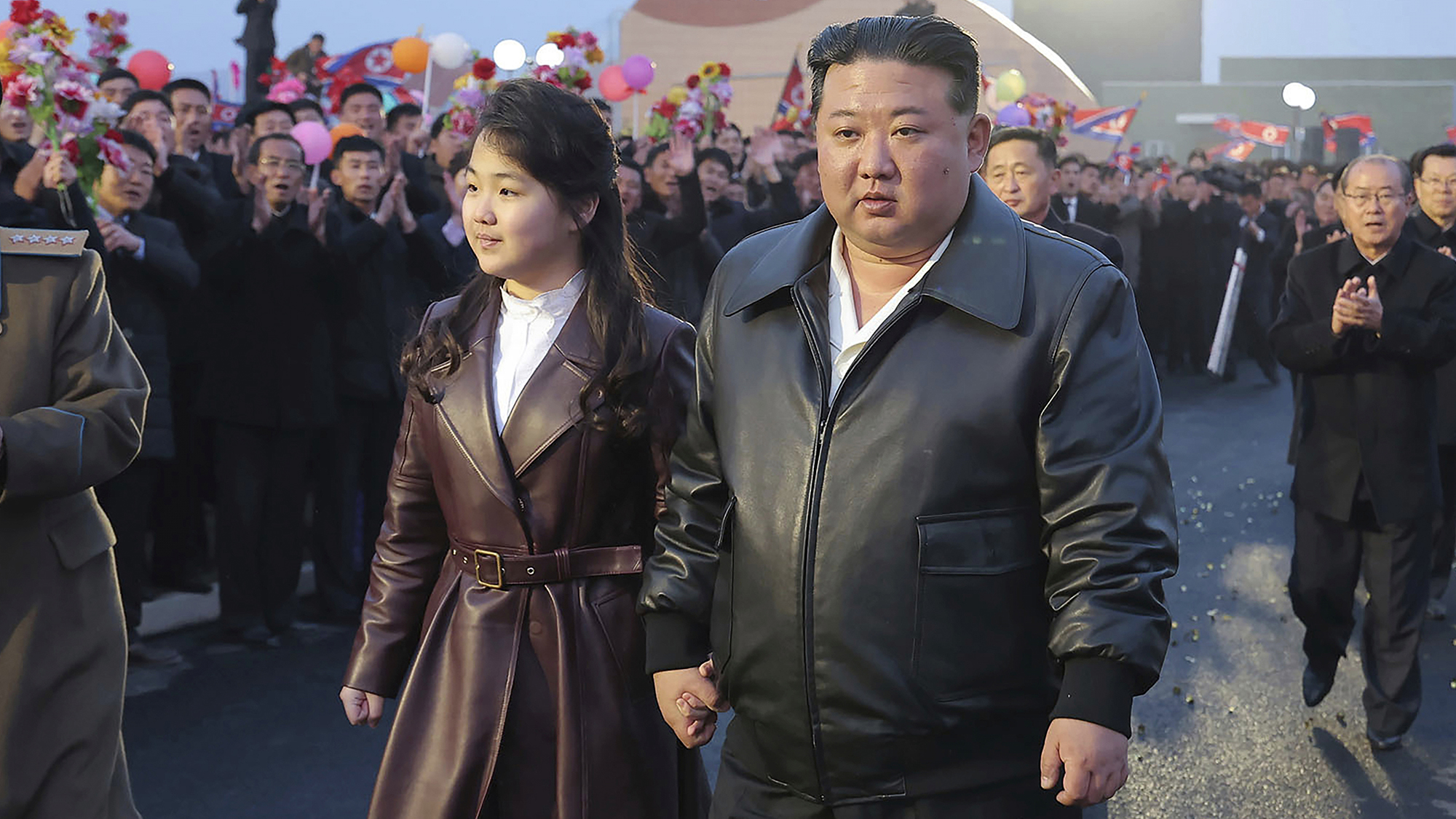Are North Korea’s nuclear weapons a real threat to the West?
Kim Jong Un warns secretive state is accelerating its atomic missile program

Kim Jong Un has issued a threat that he is planning to speed up development of North Korea’s nuclear arsenal and have missiles ready to fire without warning.
During a military display in the capital city Pyongyang, at which The Times said “intercontinental ballistic missiles (ICBMs), hypersonic weapons and other military hardware were on display”, the North Korean leader vowed to ramp up the development of atomic weapons despite international opposition to further tests.
“We will continue to take steps to strengthen and develop our nation’s nuclear capabilities at the fastest pace,” Kim said at the event held to mark the 90th anniversary of the Korean People’s Revolutionary Army. “The nuclear force of the Republic must be ready to exercise its responsible mission and unique deterrence anytime”.
The Week
Escape your echo chamber. Get the facts behind the news, plus analysis from multiple perspectives.

Sign up for The Week's Free Newsletters
From our morning news briefing to a weekly Good News Newsletter, get the best of The Week delivered directly to your inbox.
From our morning news briefing to a weekly Good News Newsletter, get the best of The Week delivered directly to your inbox.
How many nuclear weapons does North Korea have?
According to the Arms Control Association, a US organisation that tracks nations’ military capabilities, North Korea was estimated to have between 40 and 50 nuclear weapons and enough fissile material to build six to seven nuclear weapons per year as of 2022.
In 2003, North Korea withdrew from the Treaty on the Non-Proliferation of Nuclear Weapons. And since 2006 it has conducted a series of six nuclear tests displaying increasing levels of expertise, prompting the introduction of Western sanctions.
Since the start of 2022, the country has tested “hypersonic as well as short-range, intermediate-range and long-range ballistic missiles”, the BBC reported last month. Its latest test was of an intercontinental ballistic missile (ICBM), according to South Korea, which if confirmed would be “the first time an ICBM has been fired since 2017”.
What type of nuclear weapons?
Kim has a “diverse arsenal of ballistic missiles”, The Wall Street Journal reported, including “a nuclear-powered submarine”, “hypersonic missiles” and “powerful ICBMs”.
A free daily email with the biggest news stories of the day – and the best features from TheWeek.com
Most of North Korea’s missile tests in recent years have “sought to strengthen shorter-range missiles”, the paper added, with experts in Pyongyang boasting “successes firing weapons from submarines and train cars”.
However, the dictator is also known to have “missiles that can reach the US”, the BBC said, including the Hwasong-14 which has a “potential range of 8,000km”. This would place New York comfortably within striking distance.
Its Hwasong-15 missile “is believed to have a range of 13,000km”, the broadcaster added, a range that puts “all of the continental US in its sights”. And in March Kim unveiled a new, unnamed missile that North Korean experts claim is “able to carry a payload of 2.5 tons – so capable of in theory carrying a nuclear warhead”.
How dangerous are they?
In recent years, North Korea has kickstarted “an accelerated buildup of nuclear weapons” alongside the “modernization of its already large conventional force”, said the Washington-based Council of Foreign Relations.
Some experts now think that it may have “more than 60 nuclear weapons”, the think tank continued, while the notoriously secretive state has also “successfully tested missiles that could strike the United States with a nuclear warhead”.
The US and its Asian allies view North Korea as “a grave security threat”, especially given Kim’s tendency to use “aggressive rhetoric” when threatened, the think tank added. Sanctions have also proven “ineffective in slowing its path to acquire nuclear weapons”.
What will happen next?
Addressing the crowds in Pyongyang’s Kim Il Sung Square, Kim said that the build-up of his nuclear capabilities was intended as a deterrent, warning: “If any force attempts to usurp the fundamental interests of our country, our nuclear force will have no choice but to carry out its second mission unexpectedly.”
Pictures released by the state-run Korean Central News Agency showed that the display “featured submarine-launched ballistic missiles” and the “Hwasong-8 hypersonic missile”, The Times reported, as well as “a guided missile system for tactical nuclear warheads”.
Speaking to the paper, Yang Moo-jin, a professor at the University of North Korean Studies in Seoul, said that it was “noteworthy that Kim is now talking more specifically about the purpose of his nuclear weapons”.
South Korean presiden-elect Yoon Suk-yeol has previously “threatened a pre-emptive strike on Pyongyang if needed”, he added. “Kim seems to be indirectly saying that he may have to respond with nuclear tactics should Yoon indeed proceed.”
Kim’s remarks “suggest he will continue provocative weapons tests in a pressure campaign to wrest concessions from the US and its allies”, The Guardian said. He appears to have revived “nuclear brinkmanship” as a means to force “the US to accept North Korea as a nuclear power and to remove crippling economic sanctions”.
-
 Quiz of The Week: 6 – 12 December
Quiz of The Week: 6 – 12 DecemberQuiz Have you been paying attention to The Week’s news?
-
 The week’s best photos
The week’s best photosIn Pictures A man's best friend, the elephants in the room, and more
-
 A TikTok trend has Gen Z men leaving streetwear behind for more preppy attire
A TikTok trend has Gen Z men leaving streetwear behind for more preppy attireThe Explainer More than a zipper: Young Black men embrace the ‘quarter-zip movement‘
-
 Femicide: Italy’s newest crime
Femicide: Italy’s newest crimeThe Explainer Landmark law to criminalise murder of a woman as an ‘act of hatred’ or ‘subjugation’ but critics say Italy is still deeply patriarchal
-
 Brazil’s Bolsonaro behind bars after appeals run out
Brazil’s Bolsonaro behind bars after appeals run outSpeed Read He will serve 27 years in prison
-
 Americans traveling abroad face renewed criticism in the Trump era
Americans traveling abroad face renewed criticism in the Trump eraThe Explainer Some of Trump’s behavior has Americans being questioned
-
 Nigeria confused by Trump invasion threat
Nigeria confused by Trump invasion threatSpeed Read Trump has claimed the country is persecuting Christians
-
 Sanae Takaichi: Japan’s Iron Lady set to be the country’s first woman prime minister
Sanae Takaichi: Japan’s Iron Lady set to be the country’s first woman prime ministerIn the Spotlight Takaichi is a member of Japan’s conservative, nationalist Liberal Democratic Party
-
 Russia is ‘helping China’ prepare for an invasion of Taiwan
Russia is ‘helping China’ prepare for an invasion of TaiwanIn the Spotlight Russia is reportedly allowing China access to military training
-
 Interpol arrests hundreds in Africa-wide sextortion crackdown
Interpol arrests hundreds in Africa-wide sextortion crackdownIN THE SPOTLIGHT A series of stings disrupts major cybercrime operations as law enforcement estimates millions in losses from schemes designed to prey on lonely users
-
 Kim Ju Ae: North Korea’s next leader?
Kim Ju Ae: North Korea’s next leader?The Explainer Kim Jong Un’s young daughter is being seen as his ‘recognised heir’ following a high-profile public appearance at China summit